The Mechanics of a Post-Apocalyptic World: Degenesis Rebirth and KatharSys
Degenesis Rebirth
Six More Vodka
In early January, I was at my local game shop (Hero’s Emporium) chatting with a clerk. I was there to run a game and was awaiting the players to show up. As gamers do, we talked about all the games we wanted to run, and he brought up Degenesis Rebirth. I scratched my head. “What is this you speak of?” He found an online trailer (and another). I then found their website (now replaced).
You may recall that in late 2019, Black Gate published a couple of articles (encountering it at Gen Con and discussing the setting) about the game they discovered at Gen Con. Those articles dive into the stupendous design and thought of this game by a German company called Six More Vodka. I will simply add that these are some of the most gorgeous RPG books ever created with one of the most interesting and thorough settings, and like E.E. Knight, I have been obsessing over them. Six More Vodka recently relaunched their website dedicated to the game with a ton of short fiction and setting information and — everything in digital format for free. Free. FREE. Did I say, “Free”?
Set in a world centuries after a series of asteroid collisions with Earth, Degenesis Rebirth’s games take place in a post-apocalyptic world. The asteroids carried (or did their destruction and opening up of the Earth allow something to escape?) an extraterrestrial substance — spores, etc. — that infect the land and people, twisting both to unrecognizable and dangerous new things. This infection upon the land and people was rightly called Sepsis. As Europe and Africa recovered and adapted, a number of cultures and societies (called cults) have established or compete for dominance.
In this article, I want to explore in more depth the actual mechanics of Degenesis Rebirth, which uses what Six More Vodka calls the KatharSys system. In a later article, I will cover character creation and how the culture and cult choices affect that process.
KatharSys uses a set of attributes that in turn are tied to specific skills. The attributes are Body, Agility, Charisma, Intellect, Psyche, and Instinct. Body is a measure of a character’s physical strength and toughness. Agility determines a character’s ability to fire weapons accurately, craft items, and sneak around. Charisma is all about a character’s presence and using that to persuade and negotiate with others in the world. Intellect represents a character’s ability to absorb facts and organize them into a coherent whole. A character’s force of will is Psyche. Instinct represents the internal, evolutionary mechanism in the character that guides their reactions.
For the skills, you will find a logical arrangement tied to those attributes — six each for a total of 36. Some examples for each attribute: Body, you have Athletics, Brawl, and Toughness. Agility: Crafting, Projectiles, and Stealth. Charisma: Arts, Conduct, Leadership. Intellect: Engineering, Focus, Science. Psyche: Cunning, Deception, Willpower. Instinct: Empathy, Perception, Survival.
In KatharSys, the basic dice mechanic is straightforward. For every attribute and associated skill level, grab that number of six-sided dice. Roll. Results of 1-3 are failures, while successes are 4-6. For every roll, you are attempting to get a certain number of successes.
Let’s say that Zia is attempting to modify her Trailblazer rifle (a Tech Level IV weapon) with a scope. Because it a Tech Level IV, the appropriate combination of attribute and skill is her Intelligence, level 3, and Engineering skill, level 2. The Difficulty is Difficult, meaning she needs 4 successes on the die roll. Zia’s player rolls 5 six-sided dice (3 + 2) and has the following results on each die: 1, 4, 3, 4, 6. Three success results and 2 failure results, which means an overall failure.
As the example demonstrates, more dice in your pool means a greater likelihood of succeeding. The pool can be modified in a number of ways. For example, if Zia had used some special tools for the task, she could have added one additional die to the pool. Other ways to boost the pool are through advancement in the cult and what KatharSys calls Potentials — talents or feats. If Zia rises high enough in the ranks of the Hellvetics, she can become an Infiltrator, which grants a +4 dice to any Orienteering role. If she acquires the Discipline potential, she gains a +1 die to her Mental Defense per each level of the potential.
Dice rolls can produce additional results beyond simple success and failures. When a player rolls 6s, those count as both success and triggers. The more triggers on a roll, the better the character has succeeded. Triggers provide narrative opportunities along with mechanical benefits. While under fire, Zia calls over her mammoth — that’s right — Crimson. As Crimson comes running by, Zia wants to mount without having to stop. The game master determines this is a Difficult Agility + Mobility check. Zia’s Agility is 4 and her Mobility is 4, so she has 8 dice in her pool. She rolls with results of 2, 3, 3, 4, 4, 5, 5, 6.
That is a success with one trigger, Solid. Zia mounts Crimson in a fluid motion and is able to start putting distance between her and her attackers. If she had rolled three 6s, then she would have had an Excellent trigger. Perhaps not only does she mount Crimson, but she is able to keep Crimson calm amidst the shots coming in and get to full speed more quickly.
Just like good things on rolls, bad things can happen as well. If Zia had instead rolled 1, 1, 1, 1, 3, 4, 5, 6, she would have failed the check. However, in addition she rolled more 1s than total successes — a botch. Instead of getting onto Crimson and making an escape, Zia tumbles onto the ground, exposed to enemy attack as her mammoth companion lumbers away.
One challenge with dice pool mechanics are the large number of dice players may have to roll and then tally up. KatharSys limits the pool to 12 dice maximum. If your pool would have 13 or more dice, any dice 13 and beyond count as automatic successes — but not triggers.
If your character is in conflict with someone else, then both roll their requisite dice. The one with the most successes overcomes the other. In case of a tie, then the number of triggers decides the decision. That said, Katharsys allows ties if that is possible — if not, then the character initiating the action fails. For example if Zia is racing Crimson against Daud’s mammoth, Roach, both roll their respective dice pools. Zia rolls eight dice and gets the following: 1, 2, 2, 3, 4, 5, 6, 6. Daud is less skilled, and he only rolls five dice, which result in 2, 4, 4, 5, 6. Both have the same number of successes, but Zia has two triggers compared to Daud’s one, meaning she and Crimson cross the finish line first. If Daud had rolled two 6s, then the race would have ended in a tie.
Note, characters in conflict can use entirely different skills. Perhaps Zia is attempting to persuade a friend to bet on her in the race, so she uses Charisma plus Negotiation. Daud, however, tries to deceive the bettor about his skills and uses Psyche plus Deception. The die rolling still works the same.
The rule set goes into some detail about combinations, chains of tasks requiring die rolls. All the skill descriptions include examples of combinations. Daud, knowing that he was going to be racing Zia, decides to put in some traps along the racing path to slow Zia down. He needs to construct the trap and do so stealthily. The order is important. In this case, the first is setting the trap (Agility plus Crafting) and then hiding it (Agility plus Stealth). Daud rolls his dice pool. He must succeed in the Agility plus Crafting roll to even attempt the Agility plus Stealth roll. Any triggers from the first roll transfer to the second. Hence, if Daud succeeds in the Agility plus Crafting roll with a trigger and then succeeds in the Agility plus Stealth roll with another trigger, he accomplishes the task with two triggers total.
Cooperative rolls enable other characters to assist. In these cases, the assisting characters roll the same check at a higher difficulty level (one per check). In other words, Zia is working on calming Crimson down after the brush with bandits, she is using her Instinct plus Taming attribute and skill. The game master determines this is a Challenging task. Zia’s friend Colton wants to use his Instinct plus Taming to help calm Crimson, but for him it is a Difficult task. If Zia’s friend Fendi wants to assist, it is a Very Difficult task for him. Every trigger Colton and Fendi roll becomes additional dice for Zia to use in her roll that determines the final outcome of the task. While no mention is made about what happens if Colton or Fendi fail, presumably, they would make the situation more challenging for Zia.
The final check is one I like. KatharSys calls it the complex check (I have heard this type of check also called a skill check as well). Essentially, a task can require a bit of time, a different set of skills, or other situations that warrant not a singular check, but instead require a series of checks. For example, perhaps Zia is certain that Daud will intend to cheat in the race. She recruits Fendi and Colton to help her try to find out how and when. Fendi will check the race course for hidden traps. Zia and Colton will talk to folks who live near the course and see if they saw anything. The game master decides that the the team needs to roll a total of 20 successes. Those characters conduct their rolls. All successes count toward meeting the 20 success threshold. Triggers count double. Failures may mean that the team takes longer to secure the information but does not necessarily jeopardize the task itself. Whenever I have run such checks in game, I often ensure that all the players contribute and ask them to come up with approaches to resolving a task. I have particularly enjoyed this type of check when mixing combat and non-combat scenarios (escape the building before it blows as they are harassed by the enemy — do the players focus on combat or on fleeing) or for a tasks that take some time and employ a variety of skills.
A character’s physical condition is represented by Ego, Flesh Wounds, Trauma, and Spore Infestation. Ego is a spendable resource that can be bought back and allows players to buy advantages in combat, though if the stat drops to zero, they’ll pass out. Flesh Wounds are the initial injuries and can be recovered pretty quickly, but Trauma are substantially more serious and fewer. Spore Infestation charts the character’s contact — in a bad way — with the deadly remnants of the Eschaton that threatens the land and people across Europe and Africa.
During combat, each round starts with an Initiative roll, which is Psyche plus Reaction, and the player can spend up to three of her Ego points to add the equivalent number of dice to the Initiative roll (and the same for their first action in the turn). The number of successes determines the order of action for all the players, but for every two triggers, the player can conduct an additional action.
These additional actions are particularly important, for each character can only act once per round otherwise. Actions are what one would expect: Move, Attack, Active Defense, Reload, etc. The attacker first builds up her dice pool, which includes lowering or increasing the number of dice based on distance, aiming, weapon handling, and whatever Potentials the player may have. The player rolls the dice. This is now compared to one of two options: Active or Passive Defense.
Active Defense allows a player to use an action (and depending on the initiative roll and other factors could be the only action for that character this round) to roll the appropriate counter check. For dodging ranged or melee attacks, it is an Agility plus Mobility roll. For blocking a brawl or melee attack, it is a Body plus Melee or Brawl roll. In that case a successful roll (that is, more successes by the defender than successes by the attacker) results in no hit — and if the defender gets three triggers, she actually causes damage to the attacker.
For the Passive Defense, the attacking player merely needs to have more successes than the Passive Defense number. The base Passive Defense is 1, but if the character being attacked is moving, then they get a plus one to that defense, requiring at least three successes to hit. Factors such as cover full running and so on also modify the Passive Defense number.
The ability to spend Ego for the initiative role each round adds a level of decision making to the game. Do players spend their Ego points to improve their odds of gaining more actions in that round, including Active Defenses and full movement? Actions that could be decisive. Doing so, means they can quickly go through their Ego, resulting in exhaustion, and if they have not dealt with their foes…. Different players will have different styles, probably dictated to some degree by their characters, but this aspect of the game helps ensure that combat and the decisions therein do not turn into hackathons. I tend to think attempting to end the combat as quickly as possible — thus spending Ego in an attempt to get extra actions — is the way to go.
Combat is not only tiring but it is also deadly. Weapons — whether fists or submachine guns — cause a set amount of damage and armor provides a set reduction in that damage. If a character hits her target, the damage is applied, minus the armor rating, against the Flesh Wounds. Once Flesh Wounds are depleted, damage goes to Trauma. Weapons also have a host of qualities that give boosts or damage opponents in a variety of ways. A standard knife in this game causes 2 plus the attacker’s Force skill rating divided by 3. Thus, a character with Force skill of zero causes 2 points of damage, but a character with a level three in Force would cause 3 points of damage. A 9mm pistol causes 9 points of damage. If your character is wearing chain mail, that affords 4 points of armor. Thus, a pistol will always do 5 points of damage to a chain-mail wearing marauder — but that marauder’s battle axe causes 6 plus Force divided by 2 (6+Force/2). That battle axe is unwieldy, however, instituting a minus two dice penalty and requiring the attacker to roll at least 2 triggers on the attack to be able to use it again the next round.
Note, some weapon qualities are activated by obtaining a set number of triggers. For instance, Smooth Running activates when an attack with brass knuckles generates three triggers. When that happens, the attacker can strike again immediately, though with a two-dice penalty. Or in the case of Sensitive, if the attacker is engaged with an opponent wielding such a weapon in a brawling or melee attack and generates a trigger, the Sensitive weapon is damaged and permanently loses one in handling — though this can be repaired by a craftsperson (be warned, if that repair attempt fails the weapon drop another level in handling).
Rules for vehicles, modifying gear, and finding scavenged parts throughout the blasted landscape follow the same pattern of influencing the dice pool up or down. Burn, what the controlled inhalation of the spore infestation is called, grants bonuses with consequences — becoming ever closer to being consumed by it.
While the rules are not groundbreaking, they are simple, elegant, and fit the setting of the game. Players new to role playing games can pick this up quickly, and experienced players will have not trouble adopting the rules. KatharSys smartly limits the overall dice pool size, and modifiers to the pool are easy to apply. Combat is dynamic, and despite initiative rolling each round, is quick and efficient due to the lethality and the mechanical encouragement to spend Ego to get extra actions per round. Overall, this is an excellent system in an amazing setting. I suspect many will obsess over this game along with me and E.E. Knight. And the digital copies are free, so what do you have to lose?
Patrick Kanouse encountered Traveller and Star Frontiers in the early 1980s, which he then subjected his brother to many games of. Outside of RPGs, he is a fiction writer, avid tabletop roleplaying game master, and new convert to war gaming. His last post for Black Gate was Flipping the Game: Uncertain Rolls in Traveller. You can check out his ongoing, play-by-post, referee-less Traveller game at basiliskstation.blogspot.com. Twitter: @patrickkanouse. Facebook: facebook.com/patrickkanouse
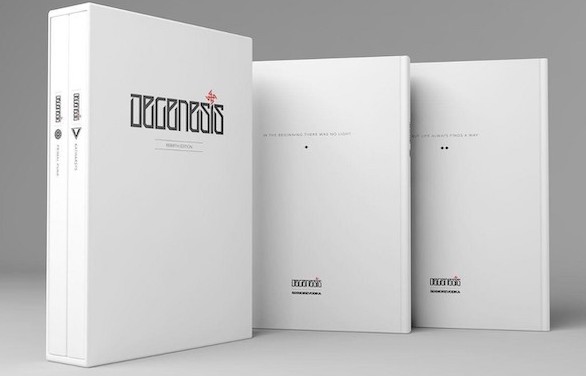

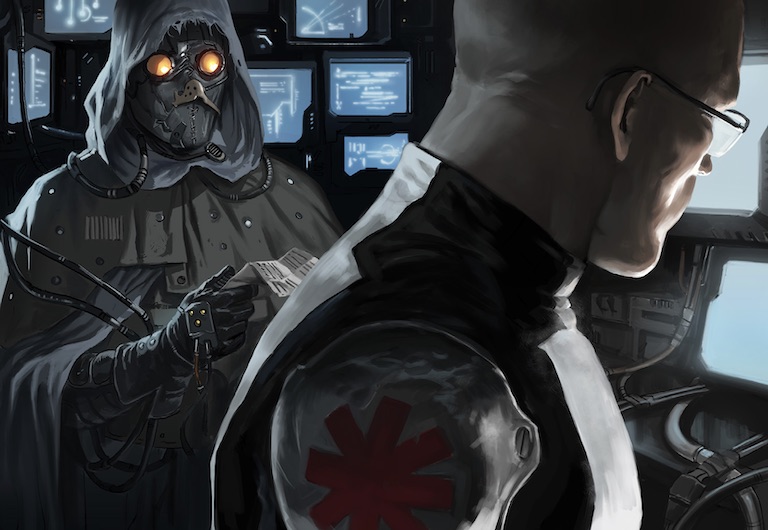
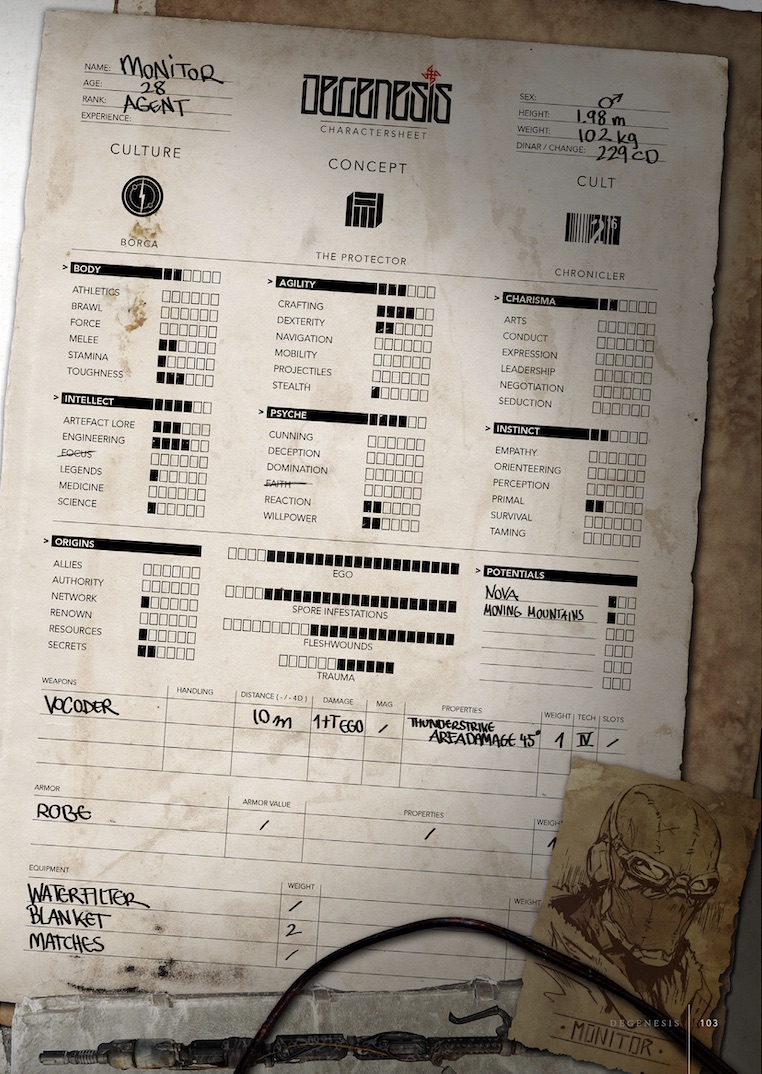
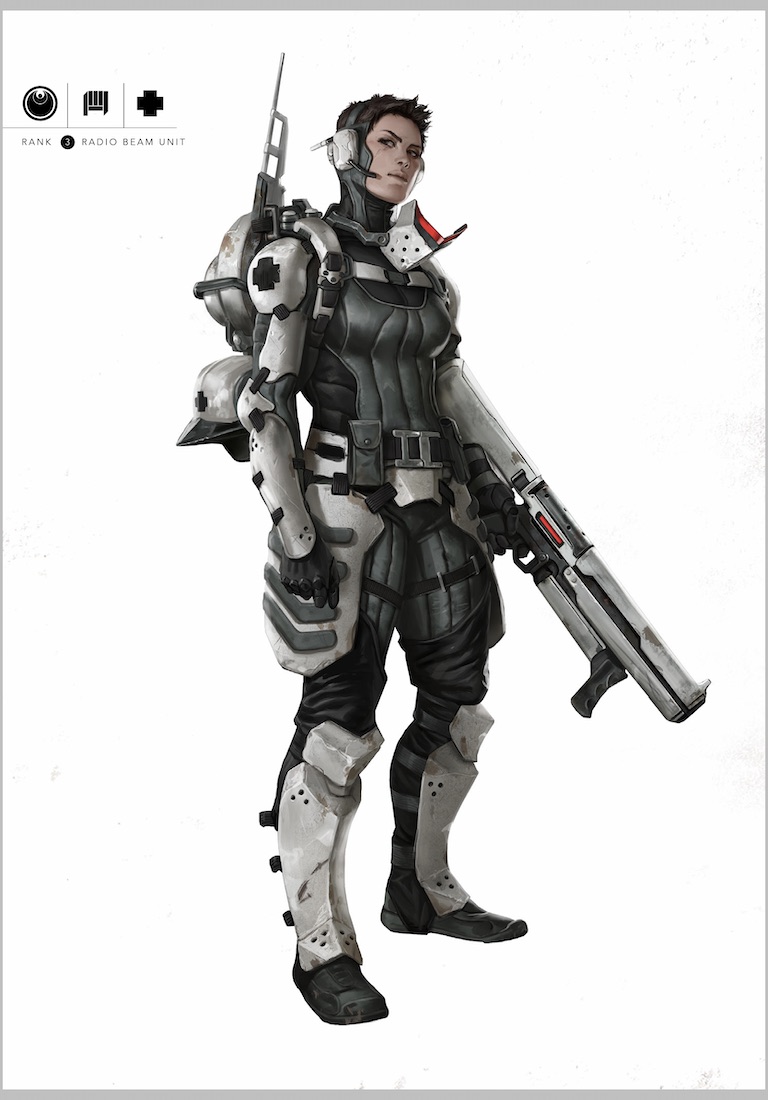
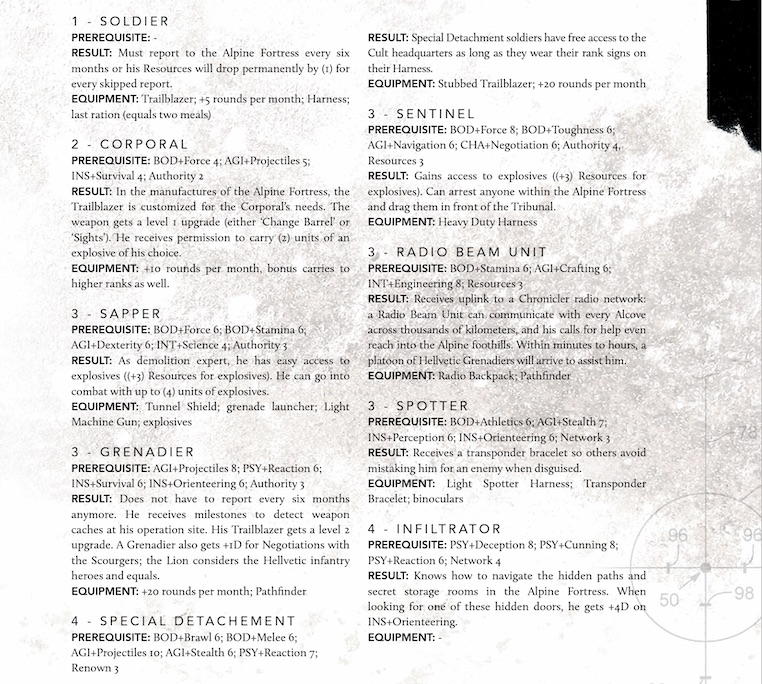

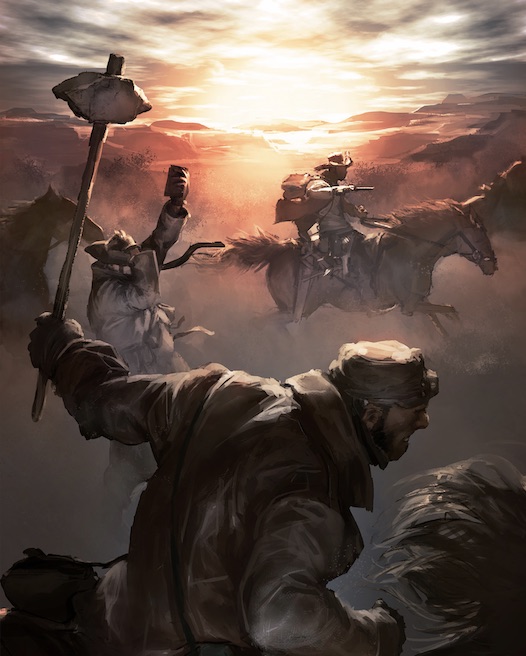
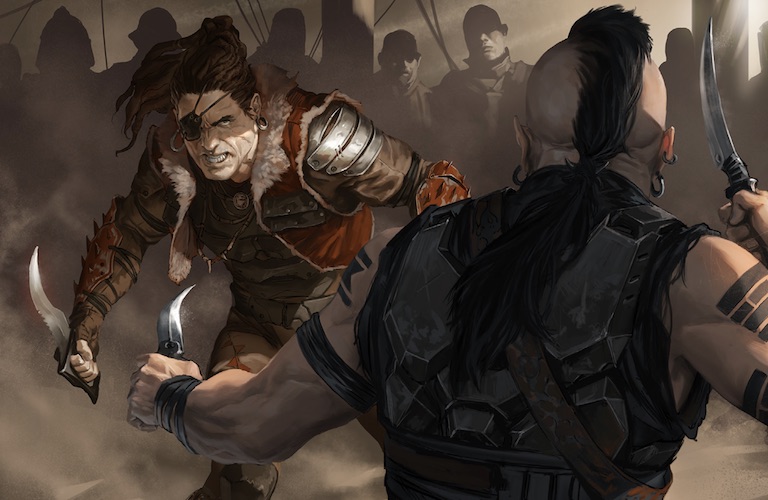
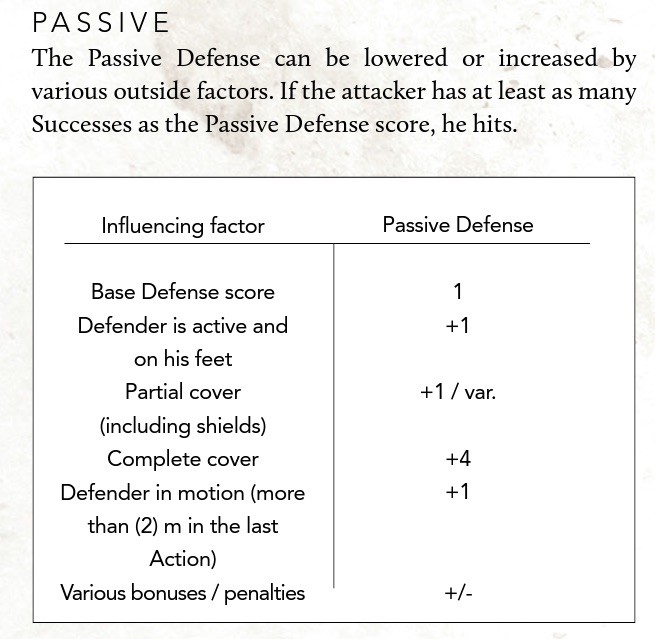

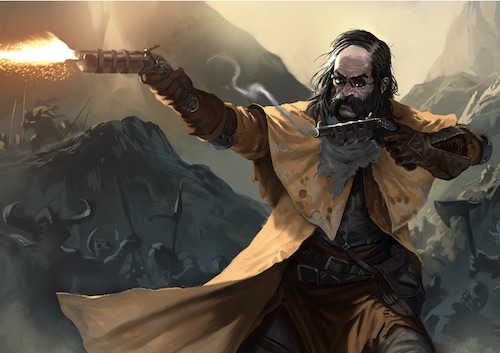
Great summary! The chargen system is really lovely, when you’re done (it takes a while!) you have a feel for who this person is. Their system for describing their standing in their cult (I don’t think that term is very good, I prefer “calling”) is elegant and easy to use.
Just from a gamemastering standpoint my favorite mechanic is the dice pooling. I think it really builds a party spirit.
Yeah, if your vehicle is broken down the tech person will be mostly responsible for fixing it and throw the most dice but others can help by holding lights, scavenging for wire, whatever, they’re all putting whatever appropriate dice they can in the pool. Maybe someone only throwing one die manages to get a trigger that I as GM can turn into a fun detail.
The combat system is complex and I was on the Degenesis forums reading about how to resolve mass actions and someone just said “the GM just decides what happens in service of the narrative” and I wish I had a million upvotes for that philosophy. 🙂
I have the “Artifacts” expansion pre-ordered and I’m looking forward to reviewing it here!
Thank you! They’ve managed to create a rich and rewarding RPG with a balance between complexity and simplicity that really strikes home with me. The cooperative dice pooling is awesome. I upvote that “the GM decides what happens in service of the narrative” philosophy.
I, too, have pre-ordered Artifacts and am looking to getting my hands on it (and reading your review). I’ve got the Justitian boxed set pre-ordered as well. 🙂